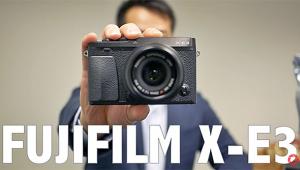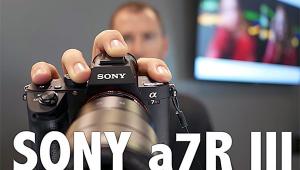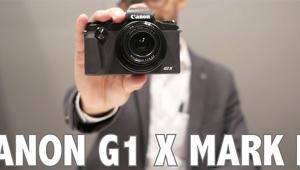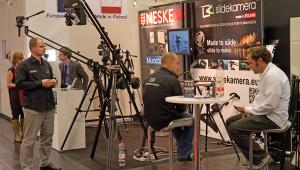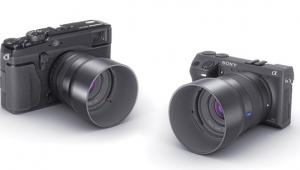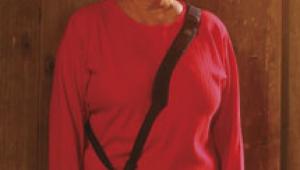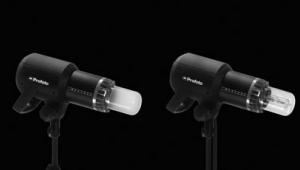Special Report: photokina
New 35mm And Digital SLR Cameras Page 2
New Digital SLR Cameras In Detail
Moving on to a closer review of the digital SLRs, I'll start with the
cream of the crop, the Canon EOS-1Ds Mark II. Boasting a full-frame 36x24mm
sensor with a full 16.7 million recording pixels, this camera offers several
advantages over its predecessor, the 11-megapixel EOS-1Ds. In addition to higher
resolution, the new CMOS sensor features larger micro lenses over each photo
site for an improved signal-to-noise ratio. Thanks to the new DIGIC II processor
image quality should be even higher. Twice as fast as the processor used in
the EOS-1Ds, DIGIC II--plus a much larger buffer--allows for quicker
start up and a faster 4 fps framing rate for 32 full resolution JPEGs or 11
raw images in a sequence.
Other significant upgrades include higher ISO options (to ISO 3200 vs. 1250),
superior white balance and autofocus tracking system, more color space options,
and more sophisticated E-TTL II flash metering system. The latter more effectively
ignores excessively bright or dark subject areas so it should produce more accurate
and predictable flash exposures, resolving one of the complaints of EOS-1Ds
owners like me. At a street price of $7999, the hefty (42.9 oz) Canon EOS-1Ds
Mark II will probably appeal primarily to professional wedding, portrait, fashion,
catalog, and stock photographers.
The first Nikon digital SLR to employ a DX-size CMOS sensor (made by Sony to
Nikon specifications), the D2X replaces the D1X as the company's top camera.
Although the effective pixel count is 12.4 million, the camera includes a unique
feature that allows for 6.2-megapixel recording (employing only the center of
the sensor) to boost the continuous framing rate as mentioned earlier. The D2X
includes a wealth of other new technology and features. A new ASIC processor
and algorithms produce higher image quality and smoother display of tones from
highlight to shadow areas while a new LSI engine allows for greater speed and
virtually eliminates shutter lag. The Advanced 3D Color Matrix Metering II system
(with new algorithms) is said to be particularly effective with high contrast
scenes, producing exposures with better highlight and shadow detail.
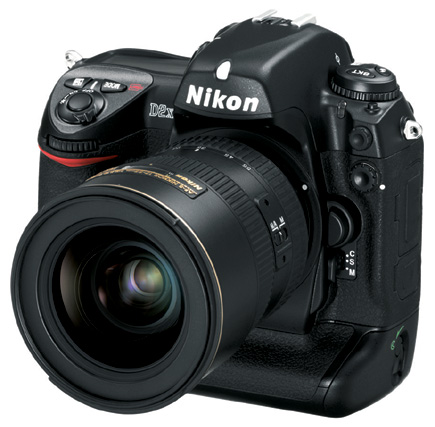
Encased in an incredibly durable, water-resistant magnesium-alloy (2.4 lb) body,
and featuring a huge 2.5" LCD monitor, the D2X also offers additional
upgrades. My favorites include a more advanced 11-point autofocus system, more
color space options, improved white balance system, new body and internal design,
GPS support, plus i-TTL Advanced Flash metering; when used with the SB-800 or
SB-600 Speedlight, wireless off-camera i-TTL lighting control is available.
Naturally, this Nikon camera incorporates a vast range of other capabilities
that will satisfy the most demanding professional. (Estimated street price,
$5999.)
The Fujifilm FinePix S3 Pro (www.fujifilm.com)
is labeled as a pro camera but it's priced at the consumer-grade level
at an expected street price of $2499. A replacement for the highly rated (6-megapixel)
S2 Pro, this SLR is similar in some respects, including some Nikon N80 features
and controls, but it's a far more desirable camera than its predecessor.
The most significant new feature is the (APS-C size) Super CCD SR II sensor
with two distinct types of photodiodes in each of its six million pixel areas,
a feature that allows it to record a 12-megapixel (4256x2848 pixel) image file.
The six million large, high-sensitivity S photodiodes are designed to record
shadow detail while the six million smaller, less sensitive, R photodiodes are
designed to capture highlight detail. In conjunction with a new image processor,
the combination is said to produce images with a wider dynamic range than conventional
sensors, useful especially in very contrasty lighting. A high signal to noise
ratio should produce a secondary benefit, lower noise at high ISO settings.
In spite of the large data files produced by the FinePix S3 Pro, the camera
can fire at 1.4 fps for up to six JPEG frames or three raw frames. Switching
to 6-megapixel mode, using only the R photodiodes, increases the framing rate
to 3 fps for up to 12 JPEGs or seven raw image files at the risk of some lost
highlight detail. While this is not the fastest camera on the market, it's
certainly very well equipped with most of the features that serious photographers
expect. Noteworthy upgrades over the earlier FinePix S2 Pro include a PC cord
terminal; quicker start up; larger 2" LCD monitor; secondary vertical
shutter release button; and support for the more sophisticated D-TTL (but not
i-TTL) flash metering. The new Film Simulation option is also noteworthy. It
allows for mimicking the look of portrait film or high saturation/high contrast
film such as Provia; a Dynamic Range Customizing function can also be used to
select the desired tonal range that will be captured. Some of these features
will endear the FinePix S3 Pro to many portrait and wedding photographers, helping
to expand its market beyond photo enthusiasts.
Canon's first consumer-grade 8-megapixel digital SLR, the new EOS 20D,
is priced to attract serious photo enthusiasts and some professionals (street
price, $1499). A tad smaller and lighter (at 1.5 lbs) than the EOS 10D, it features
slightly modified controls, a few extra capabilities, and a flash unit that
raises higher for use with larger lenses and to minimize redeye. This Canon
camera offers significant advantages over its 6-megapixel predecessor, starting
with a more reliable autofocus system using a brand-new nine-point autofocus
unit with superior low-light capability; with lenses of f/2.8 or wider aperture,
the central focus point is cross-type. Other noteworthy benefits include instant
start up (0.2 seconds vs. 2.5 seconds), virtually instant response without shutter
lag, and much faster continuous shooting rate of 5 fps (vs. 3.3 fps) for 20
JPEG or six raw images. The latter is achieved with a substantially larger buffer
and the new DIGIC II processor that also produces more consistent image quality.
The EOS 20D also includes the new/improved E-TTL II flash metering system inherited
from the EOS-1D Mark II and supports the EF-S series of lenses, just like the
Digital Rebel. In preliminary testing, the camera proved to be incredibly fast
and generated images of superlative quality, suitable for large prints of exhibition
quality.
- Log in or register to post comments
